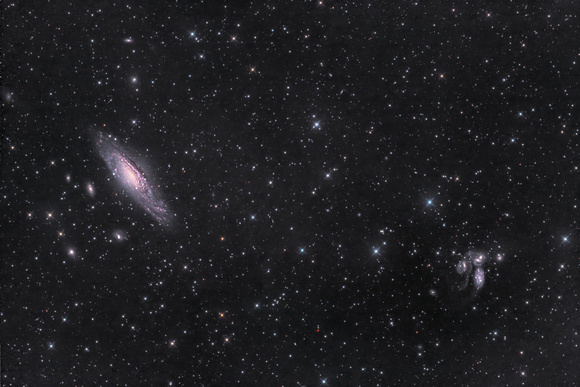Deer Lick Group and Stephan's Quintet in LHaRGB
Deer Lick Group and Stephan's Quintet - July 2022
Planewave CDK12.5 - AIS6200MM
A-P 1100 GTO AE, Antlia Pro LRGB and 3nm Ha filters
L (56 x 120s exposures, Bin 2, Gain 100)
R,G,B: (3 x 28 x 150s exposures, Bin 2, Gain 100)
Ha: (21 x 600s exposures, Bin 2, Gain 200)
Total Integration Time = 8.9 hours
I was inspired to take Stephan's Quintet by the JWST version. Besides, I wanted to switch over to my reflector telescope and wanted a break from shooting clouds.
Stephan's Quintet (lower right) is expecially interesting - four of which are in close proximity (290 MMly) while the fifth (lowest in image) is much closer (only 40MMly). Interestingly, only the closest galaxy registered a signal with the Ha filter (red) and I am left wonder if the hydrogen rich star forming areas are too small in the more distant galaxies or if the red shift associated with the more distant galaxies takes it out of the narrowband capture range. I can check the latter by doing a little math.
The Deer Lick group of galaxies (left) is dominated by NGC7331 spiral galaxy in the foreground and many "smaller", more distant galaxies also known as the "fleas". MGC7331, seems to have quite an number of hydrogren rich, star forming areas.


